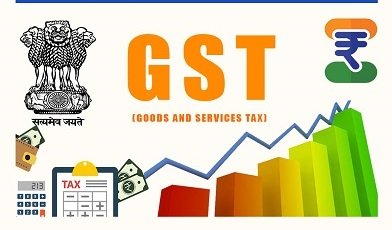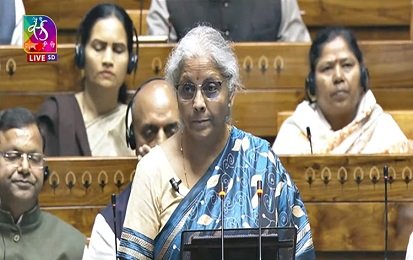Last Updated on August 15, 2025 5:49 am by BIZNAMA NEWS
By R. Suryamurthy
Prime Minister Narendra Modi’s ambitious announcement from the Red Fort to unveil a major revamp of the Goods and Services Tax (GST) system by Diwali has sparked anticipation — but stark economic realities may force a more cautious approach.
In his Independence Day address, Modi promised a series of sweeping reforms aimed at simplifying the GST framework and improving ease of living. The proposed changes include rate rationalisation, structural corrections like fixing the inverted duty structure, and tax cuts on everyday-use items such as small FMCG sachets, air conditioners, cement, tractors, and parts for electric vehicle (EV) batteries. Additionally, the government is considering reducing the current five-rate structure to a more streamlined two-tier system with limited exceptions. The petroleum ministry has also revived demands to bring natural gas under the GST regime.
However, fresh fiscal data suggests that these reforms may be running headlong into a challenging revenue environment. GST collections in July touched ₹1.96 trillion — a 7.5% year-on-year increase — but much of this came from import-linked revenue, which rose 9.7%. In contrast, domestic GST collections grew only 6.7%. More concerning, the net domestic GST revenue actually contracted year-on-year for the first time since the pandemic.
“This decline clearly signals weak domestic consumption,” noted Vivek Jalan of Tax Connect Advisory Services, underlining the economic fragility behind the numbers.
At the same time, refund outflows soared by nearly 67% in July. Domestic refunds — up by a staggering 117.6% — were driven in large part by anomalies like the inverted duty structure, especially in the case of lithium-ion batteries, where inputs are taxed at a higher 28% rate than the final product’s 18%. These inconsistencies are creating cash-flow issues for businesses and dampening industrial productivity.
The situation is further complicated by significant variations in revenue growth across states. While Madhya Pradesh and Andhra Pradesh posted robust growth of 18% and 14% respectively, Delhi and Gujarat lagged behind with increases of just 2% and 3%. States like Manipur and Mizoram even saw a sharp fall in collections, pointing to uneven consumption patterns and potential regional stress.
A recent working paper by the National Institute of Public Finance and Policy (NIPFP) raised a red flag over India’s limited GST data infrastructure. The paper’s author, Professor Sacchidananda Mukherjee, warned that without detailed, rate-wise collection data, policymakers are essentially “fiscally blind” when attempting to restructure rates. In fact, the Finance Ministry has acknowledged it cannot currently segregate collections by slab due to limitations in return filings.
Since the GST compensation period ended in 2022, poorer and less industrialised states are more vulnerable to revenue shocks from any major tax changes. Flattening rates, Mukherjee cautioned, could inadvertently shift the tax burden to rural or less urbanised regions, upsetting the fiscal balance between states.
The GST Council is expected to convene soon to examine the recommendations of the Group of Ministers on rate rationalisation. Deloitte India’s M.S. Mani noted that moving to a simpler two-rate structure would align India with more developed tax regimes and reduce legal disputes over classification. However, he warned that businesses would need significant time to rework pricing, supply chains, and backend IT systems.
While the Centre views these reforms as a way to boost consumption and industrial competitiveness, experts argue that without detailed safeguards, the changes could widen regional disparities and place further strain on the principles of fiscal federalism.
As the festive deadline nears, the government finds itself walking a fiscal tightrope — balancing bold reform with economic caution.


